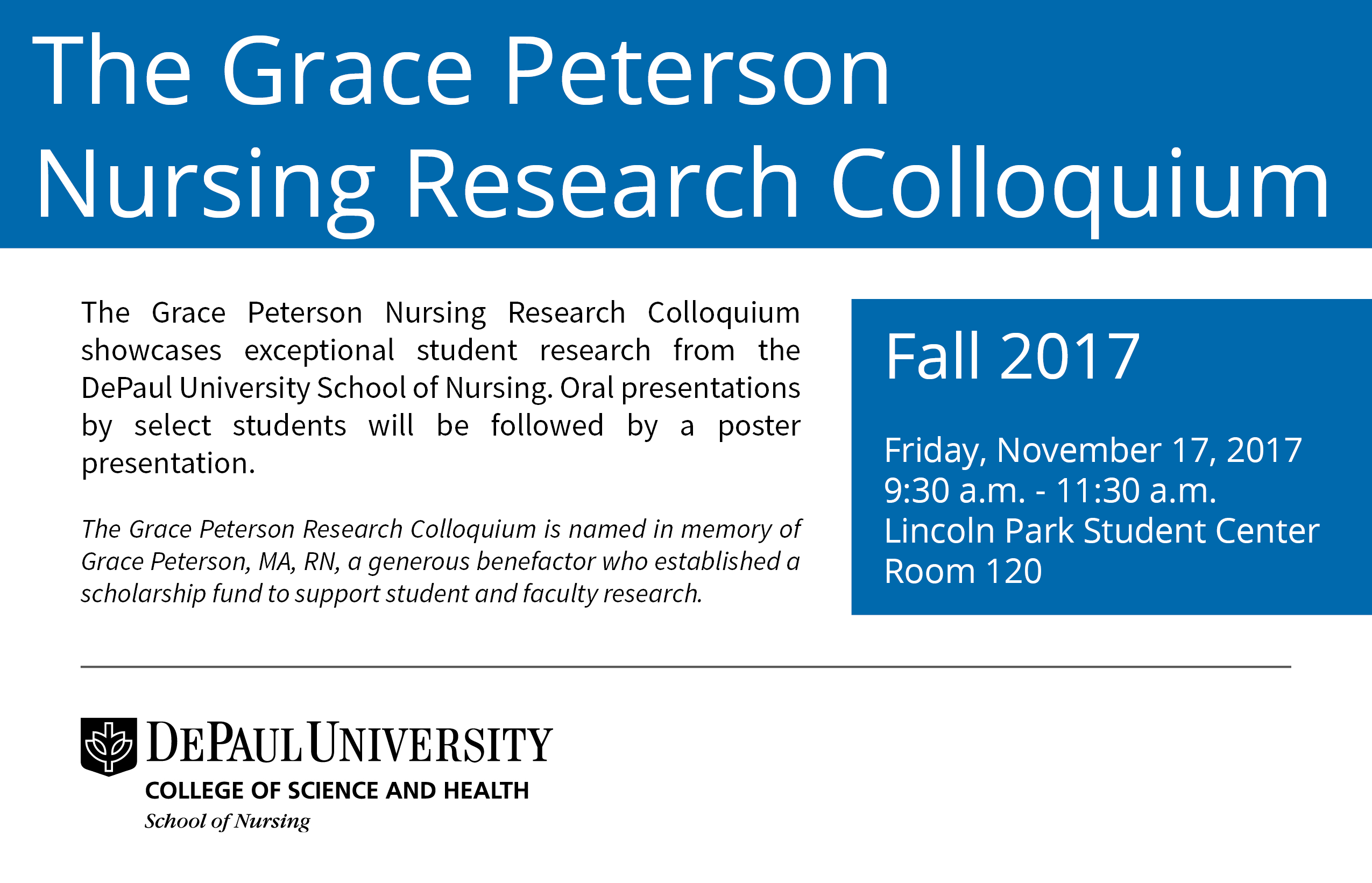Title of Research
Start Date
17-11-2017 10:00 AM
End Date
17-11-2017 11:30 AM
Abstract
The Transition from Prescription Opioid Drug Abuse to Heroin Use
Maria Varela
Faculty Sponsor: Dr. Barbara Harris, RN, PhD
Abstract
Background: The United States is currently facing alarmingly high and increasing rates of prescription opioid abuse and heroin use. Research has indicated that the abuse of prescription opioids such as hydrocodone and oxycodone may lead users to illicit drug use, specifically heroin.
Objective: The purpose of this integrative review is to identify biological, social, and psychological factors that aid in the transition from prescription drug abuse to heroin use.
Method: An integrative review guided by Whittemore and Knafl was conducted using literature found through the Cumulative Index to Nursing and Health Literature (CINAHL), PubMed, and ProQuest. The search was conducted using multiple keywords in a single search that included: “prescription opioid”, “drug abuse”, and “heroin” with dates between January 2012 and February 2017.
Results: Biological factors aiding in the transition include an existing drug tolerance, dependence, and addiction to prescription opioids as well as the actual method of drug administration. Psychologically, the desire to get high and the emotional dependence of drugs, were contributing factors. Social factors such as the cheaper cost, the ease of access, and the practicality of heroin for injection were common factors in the transition.
Conclusion: The decision for opioid drug users to turn to heroin is clearly a multifactorial one with biological, psychological, and social reasons and implications. The results of this review indicate that addiction cannot be attributed to a single reason and has to be treated on several levels. Furthermore, it emphasizes the need to come up with ideas to prevent addiction.
Included in
The Transition from Prescription Opioid Drug Abuse to Heroin Use: An Integrative Review of the Literature
The Transition from Prescription Opioid Drug Abuse to Heroin Use
Maria Varela
Faculty Sponsor: Dr. Barbara Harris, RN, PhD
Abstract
Background: The United States is currently facing alarmingly high and increasing rates of prescription opioid abuse and heroin use. Research has indicated that the abuse of prescription opioids such as hydrocodone and oxycodone may lead users to illicit drug use, specifically heroin.
Objective: The purpose of this integrative review is to identify biological, social, and psychological factors that aid in the transition from prescription drug abuse to heroin use.
Method: An integrative review guided by Whittemore and Knafl was conducted using literature found through the Cumulative Index to Nursing and Health Literature (CINAHL), PubMed, and ProQuest. The search was conducted using multiple keywords in a single search that included: “prescription opioid”, “drug abuse”, and “heroin” with dates between January 2012 and February 2017.
Results: Biological factors aiding in the transition include an existing drug tolerance, dependence, and addiction to prescription opioids as well as the actual method of drug administration. Psychologically, the desire to get high and the emotional dependence of drugs, were contributing factors. Social factors such as the cheaper cost, the ease of access, and the practicality of heroin for injection were common factors in the transition.
Conclusion: The decision for opioid drug users to turn to heroin is clearly a multifactorial one with biological, psychological, and social reasons and implications. The results of this review indicate that addiction cannot be attributed to a single reason and has to be treated on several levels. Furthermore, it emphasizes the need to come up with ideas to prevent addiction.


